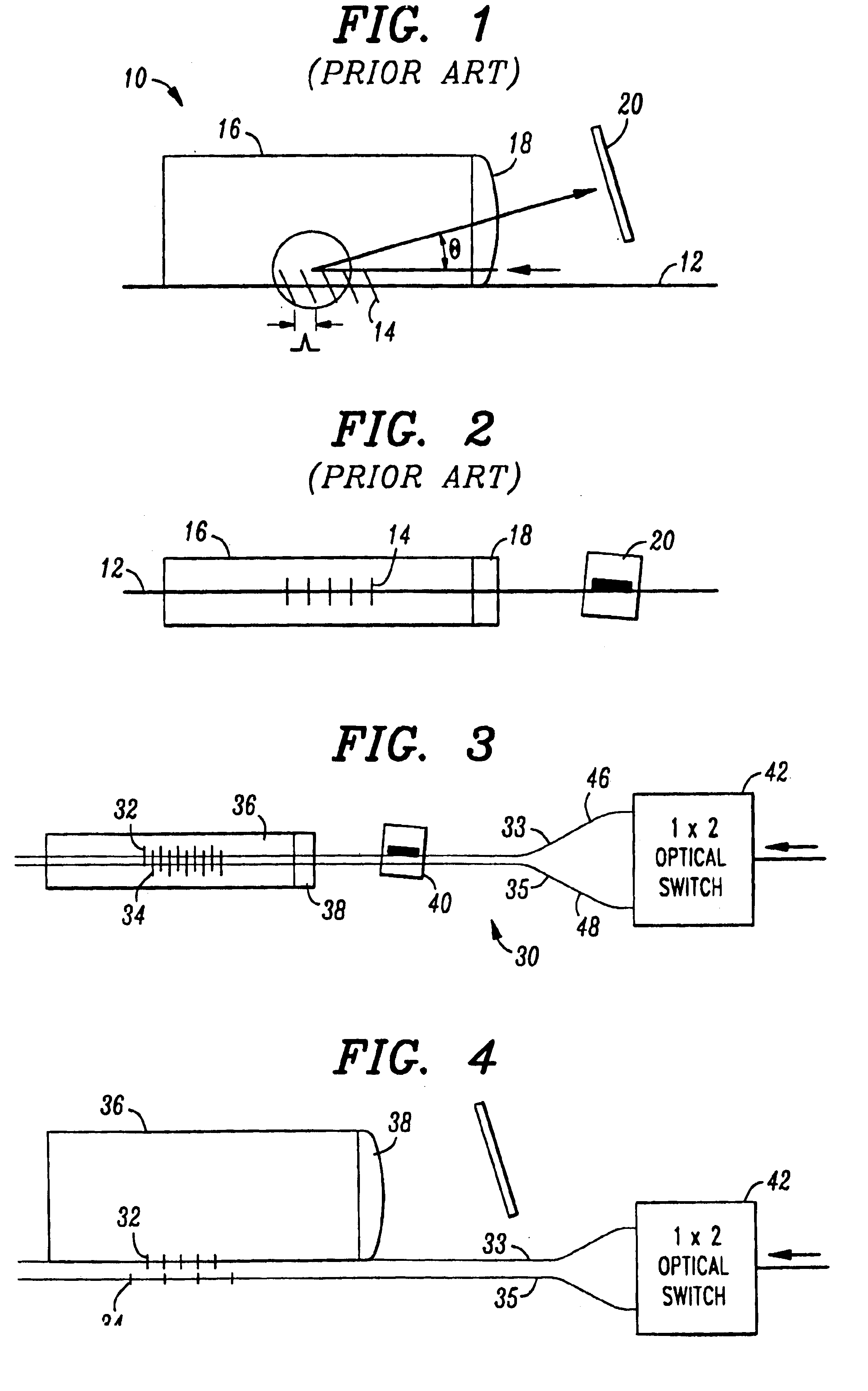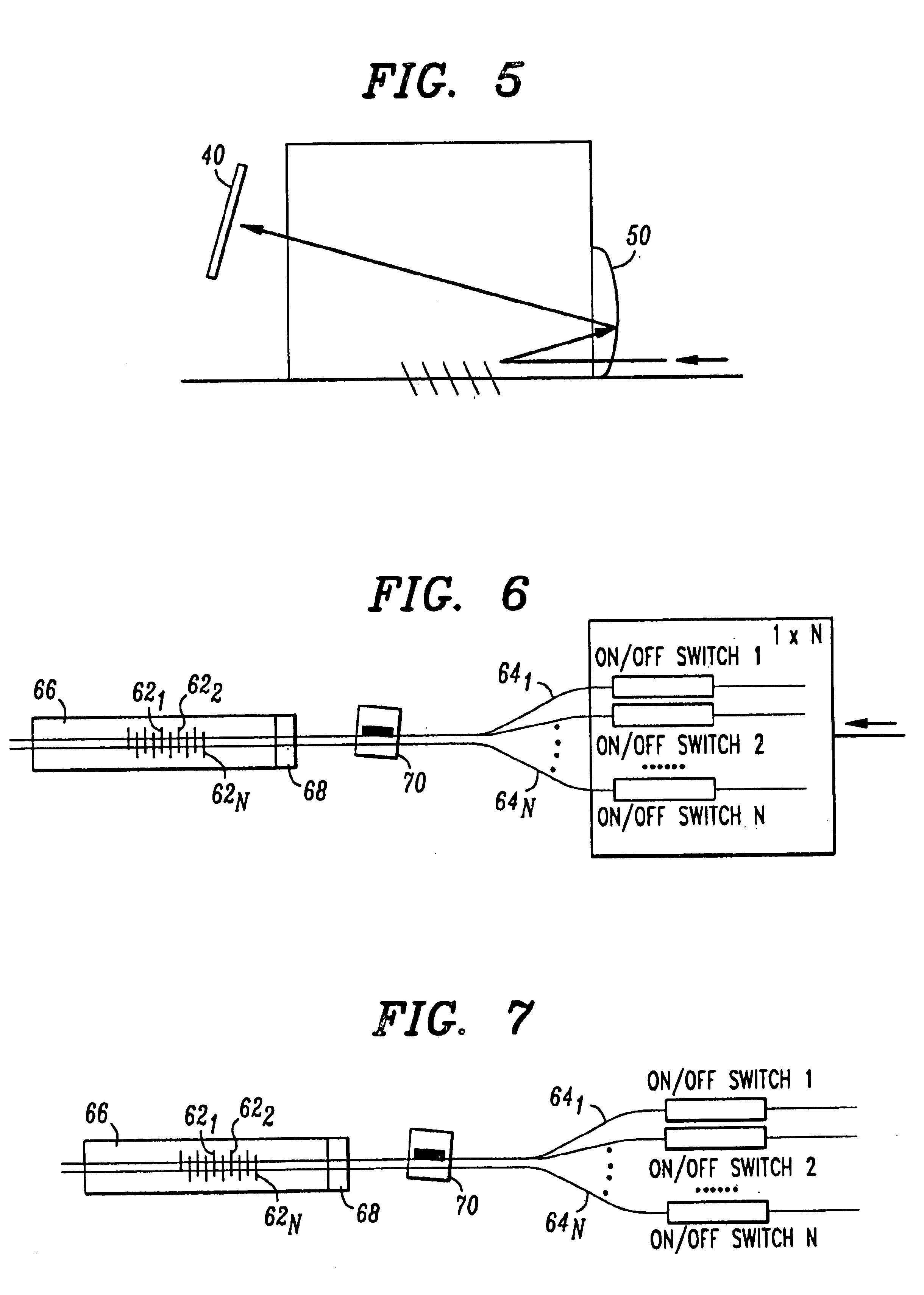Multiple grating optical waveguide monitor
a monitor and optical waveguide technology, applied in the field of optical monitors, can solve the problems that the cost/performance combination of prior art devices does not meet the desired target, and achieve the effect of improving the resolution and performance of the monitoring devi
- Summary
- Abstract
- Description
- Claims
- Application Information
AI Technical Summary
Benefits of technology
Problems solved by technology
Method used
Image
Examples
example
[0033]We have experimentally demonstrated the multiple grating optical waveguide monitor as depicted in FIGS. 3 and 4. A pair of unchirped fiber blazed Bragg gratings 32 and 34, with center wavelengths of 1547 nm and 1575 nm, respectively, were used as the dispersive elements. The blaze angles θ1 and θ2 were chosen to be equal at a value of 9°, such that the wavelength 1547 nm from grating 32 and wavelength 1575 nm from grating 34 emanated at the same angle relative to the fiber axes, namely 18°. The gratings were photolithographically written in a conventional single mode silica-based fiber using phase masks. The lengths of the gratings were approximately 10 mm. The strengths of the gratings were such that ˜20% of the single mode light at the center wavelengths were tapped out of the fibers. To achieve the fiber-to-block coupling, the gratings were bonded to a fused silica glass block (n=1.44 at 1550 nm) with an optically transparent, closely index-matching (n=1.56) adhesive. Glass...
PUM
 Login to View More
Login to View More Abstract
Description
Claims
Application Information
 Login to View More
Login to View More - R&D
- Intellectual Property
- Life Sciences
- Materials
- Tech Scout
- Unparalleled Data Quality
- Higher Quality Content
- 60% Fewer Hallucinations
Browse by: Latest US Patents, China's latest patents, Technical Efficacy Thesaurus, Application Domain, Technology Topic, Popular Technical Reports.
© 2025 PatSnap. All rights reserved.Legal|Privacy policy|Modern Slavery Act Transparency Statement|Sitemap|About US| Contact US: help@patsnap.com



